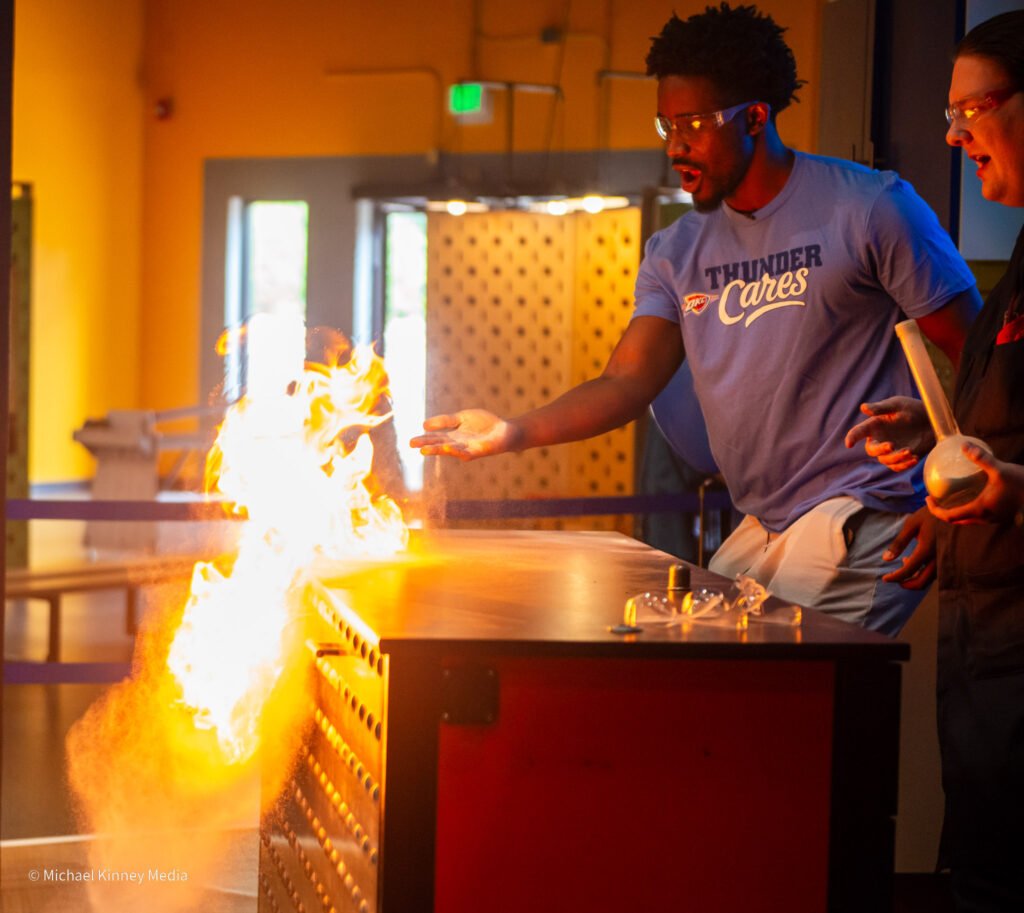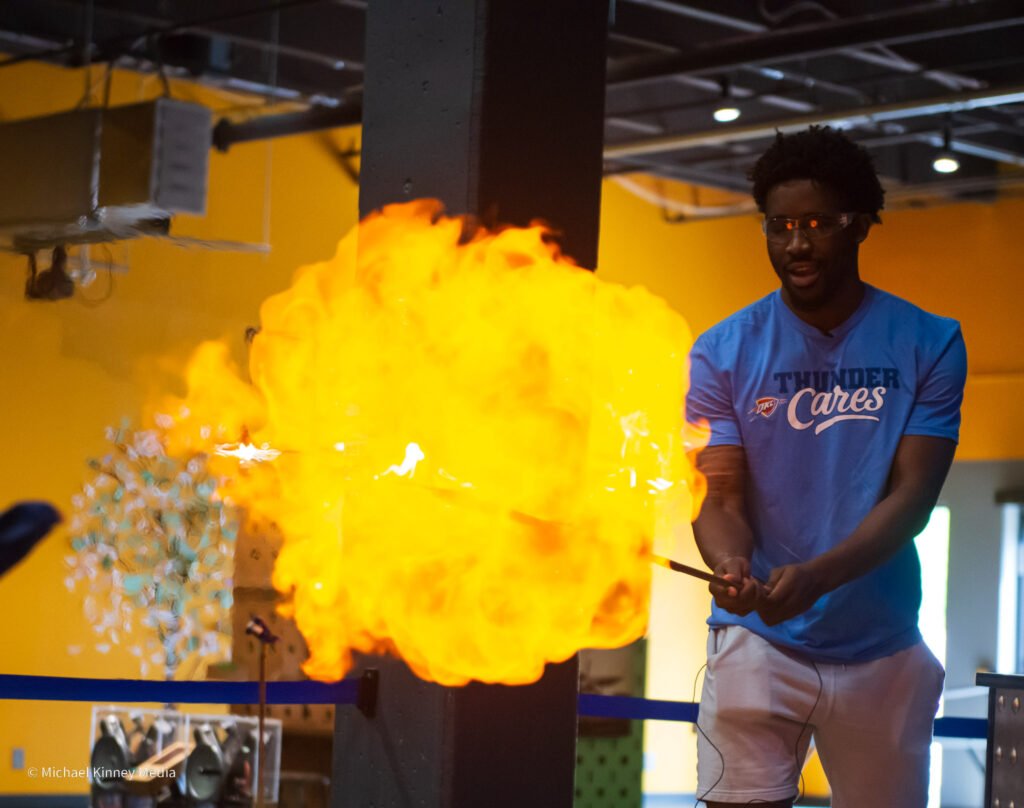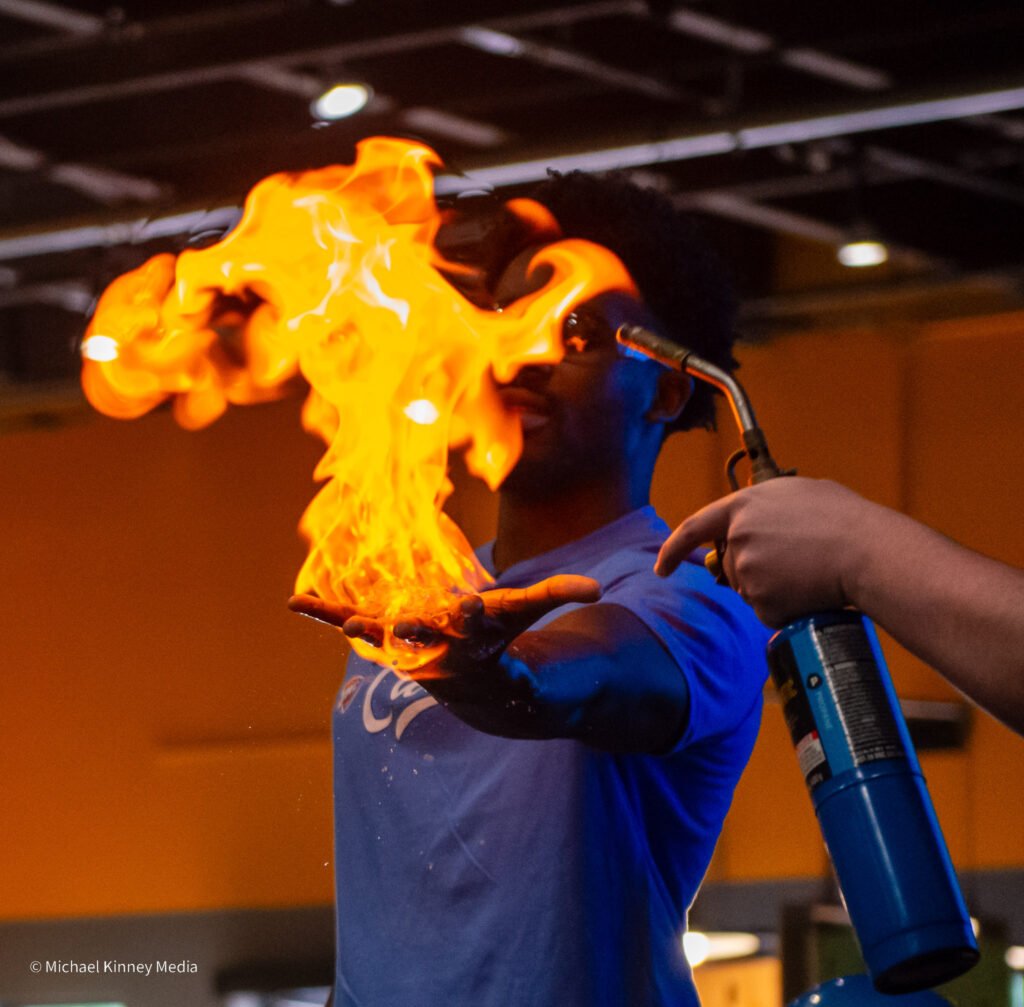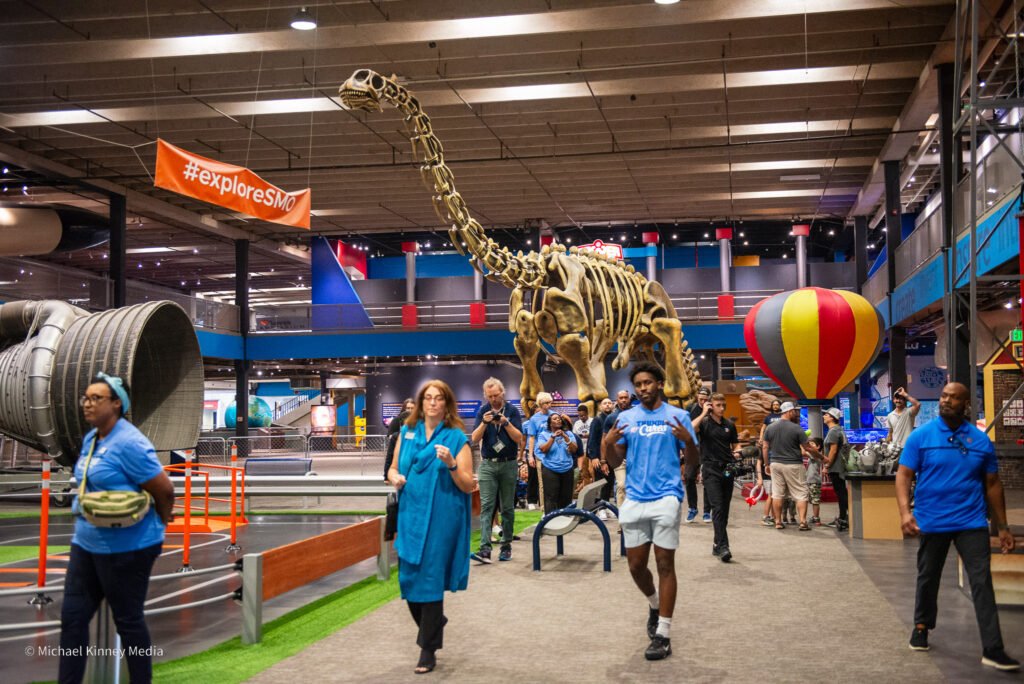Story & Photos
By Michael Kinney
When Adam Flagler stretched out his dripping wet left hand, the apprehension was visible on his face. The Oklahoma City Thunder guard had been asked to trust a man with a blowtorch he had just met five minutes earlier with his career and livelihood.

Despite that, Flagler did as he was asked and when the blowtorch clicked, his hand was immediately engulfed in a bright ball of flames for what seemed like an eternity, but was actually just one second. When the flame suddenly disappeared, Flagler stood staring in disbelief at his well-preserved hand. He immediately jumped at the chance to do it again.
This was not some Las Vegas magic show Flagler was attending. He was making a surprise appearance at the Science Museum Oklahoma on Sept. 4. The man who set Flagler’s hand on fire several times during the demonstration was a staff employee well-trained in the craft of entertaining science.
“Never thought I would ever do something like that,” Flagler said. “But I trust those guys and they took care of me.”
Along with having his hand set ablaze and creating his own fireball with a balloon, Flagler petted a non-venomous python snake. That was as far as the 24-year-old’s courage would take him.
“I didn’t know I had that big of a fear of snakes until I saw it up close and personal,” Flagler said. “That’s the first time I’ve seen one. It is super, super cool to be able to overcome a fear like that.”
Officials at the Science Museum of Oklahoma hope the youth in the state not only take notice of Flagler facing down his fear of snakes but also just how fun science can be for anyone.
“It means a lot to have the Oklahoma City Thunder here playing in the museum with us,” said Abby Wolfe, the Director of Communications at the museum. “We love it when anybody from the community can come and play and learn at the same time, which is what we’re all about here. We saw some explosions, we saw some fire, we even touched a snake, so it was a really big day for us here at Science Museum Oklahoma.”
Because Flagler’s trip to the museum took place during the afternoon on a school day, there were only a dozen or so other visitors on hand to watch his fire trick. But, according to Wolfe, the museum continues to normally draw in large crowds.
“We have set record attendance in the past few years,” Wolfe said. “I think it’s attributed to all the fun things that are going on in the museum and all the fun things that we’re adding, including the new planetarium. I hope that this continues to grow and events like this continue to bring people in to see all of the wonders of science, and maybe they’ll find something that sparks something in them to be a future scientist.”

However, that interest in science hasn’t carried over to careers in Science, Technology, Engineering, and Math (STEM) for Oklahomans. According to The Steam Engine, which a a 501(c)3 nonprofit in Oklahoma City, each year, Oklahoma graduates 40,000 high-school students. However, the state produces and retains just 2,400 STEM graduates to fill more than 6,400 STEM-related job openings.
Those numbers are even more daunting when just focused on people of color, women and people with disabilities. However, that is not just Oklahoma, but nationwide according to the National Science Foundation (NSF), which released Diversity and STEM: Women, Minorities, and Persons with Disabilities in 2023.
The report detailed that while more women, as well as Black, Hispanic, American Indian, and Alaska Native people collectively, worked in STEM jobs over the past decade, they remain underrepresented in science, technology, engineering and mathematics when compared to their overall distribution in the U.S. population.
“Diversity is America’s unique advantage in science and technology,” said NSF Director Sethuraman Panchanathan. “Our global leadership depends upon diversity, leveraging different backgrounds, experiences, and points of view to bring unique insights to problem solving and discovery. The Diversity and STEM report provides objective, reliable data on where our nation has made progress towards access and equity in STEM education and careers, as well as where we must do more.”
One of the main reasons there has been a push to get the youth interested in science is that most of the high-paying careers are trending toward STEM jobs if they are not already there. According to Indeed.com, some of the highest-paying STEM jobs require extensive background knowledge in science, mathematics and technological fields.
Those occupations include Data analyst ($74,000 annual salary), Clinical Informaticist ($94k), Mechanical Engineer ($89k), Chemical Engineer ($93k), IT Manager ($91k), Network Security Engineer ($111k) and Radiologist ($129k).

While it may be impossible to connect the dots between watching a basketball player set on fire to getting a high-paying career, Wolfe said the first step is to get kids interested in science.
“I think it’s really important that kids see themselves in the activities that we’re doing, and they see the opportunity to be a part of something big and to be a part of something fun,” Wolfe said. “I think that’s really important.”
Even though Flagler is looking to build a long career in the NBA, he hopes he can get kids who may look up to him to take an interest in science and see where it takes them.
“Being a kid, if I was here and able to see a professional athlete do such things like that, I definitely would be more intrigued in science,” Flagler said. “I’m hoping that they can come and continue to learn more about what science has to offer.”

Instagram: mkinneymedia
X (Twitter): MKinneyMedia
Youtube: Michael Kinney Media
Photos (SmugMug): Michael Kinney

